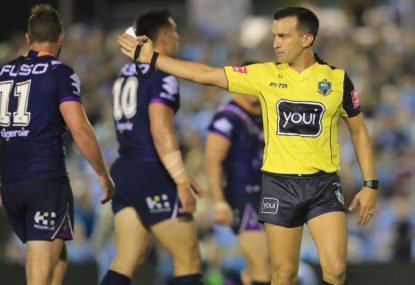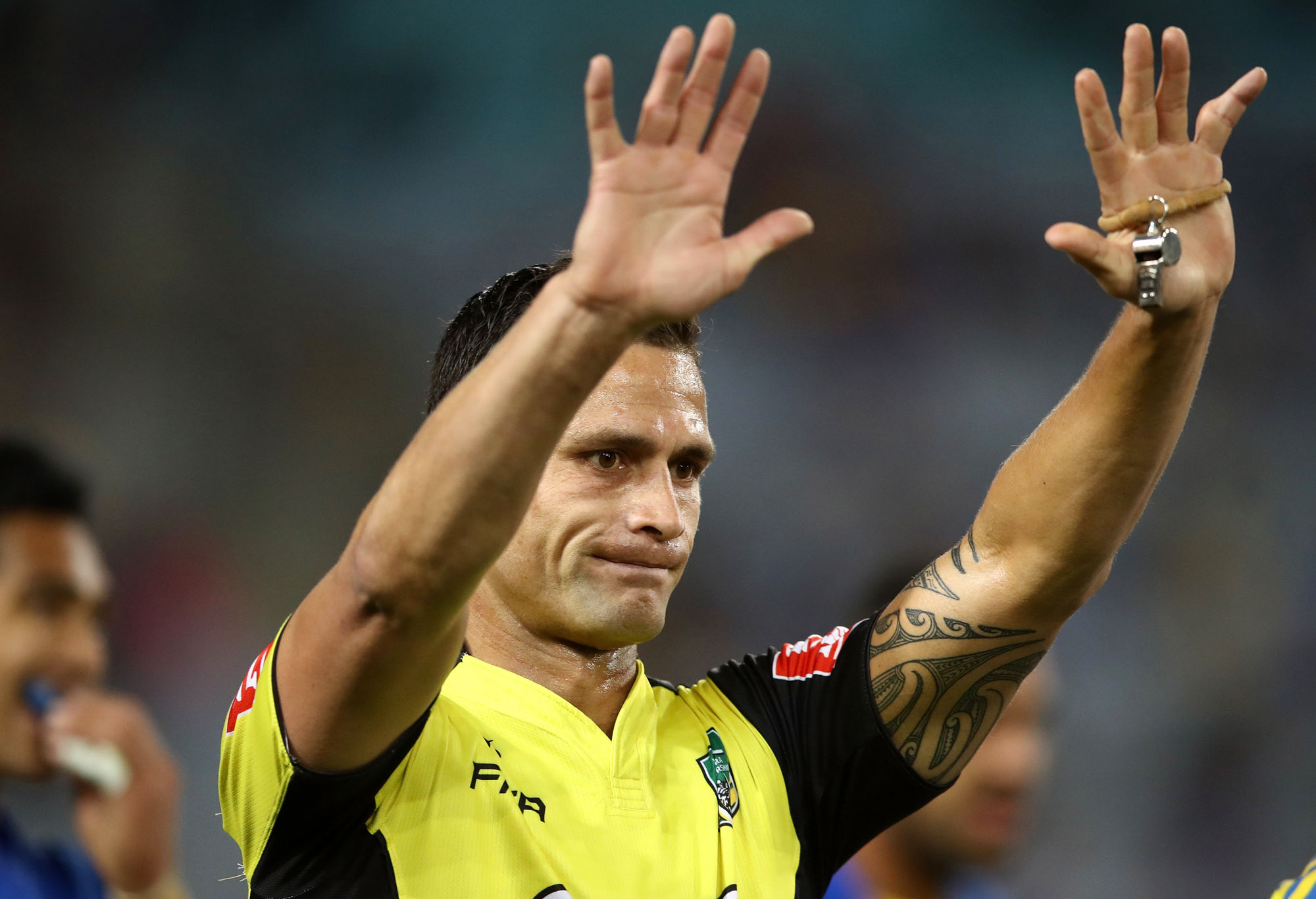NRL Round 10 judiciary: Eels duo charged, Bulldog in strife for high shot
Parramatta forwards Ryan Matterson and Shaun Lane were charged by the match review committee for incidents in Friday night's loss to Brisbane but won't…

Well, here we all go again. Is this Groundhog Day?
The referees are in the news. Because State of Origin is over we need a new outlet and fortunately, the world of NRL has delivered.
I would like to clarify that I have no specific issues with the officiating this year. Or pretty much any year for that matter. And the idea that the competition is rigged, well I’ll leave that up to you and your tin hat to discuss in whispers.
What I can see is the chance to clear up parts of the game through an increase in direct ownership of the officials during the game. The NRL should look at putting the game back into the hands of the officials on the ground.
Solution the first: one referee. Mind blown. Can we all agree that Matt Cecchin is the best whistle in the game? Yes? Do you really think he needs an anchor on the field with him disguised as a pocket referee?
League is relatively simple in earnest and needs to be officiated by one whistle. Rather than a couple blokes in hi-vis confusing anyone and everyone, there should be one person running the show who is clear and articulate in their decision making.
Heck, that other code has a billion different rules and interpretations, four more players on the field, lineouts, scrums and penalty advantages. But it somehow manages to have the single referee in the middle.
This idea isn’t without precedent either, as up until 2009 there was only the one guy with the pea. That is 100 years of a single referee, probably making the wrong calls but at least everyone knew who to complain about.
Solution the second: I’m going to commit blasphemy again and reference the other code. The NRL needs a TMO instead of the bunker.
The bunker as it stands is a little bit too big a tool at times. It takes complete control of a decision rather than assisting the referee.
Currently, the bunker is making the decision without input, other than that arbitrary I have a try/no try gimmick, which leaves the referee(s) out there standing around while the Oracle makes the decision.
What should be happening is the bunker or newly formed TMO has the decision referred and in collaboration with the single on-field referee, makes the decision on relevant available evidence to make a single decision.
The decision, in the end, needs to come down to the referee, on the balance of probabilities. Which a big term for saying, if it’s a pig it’s probably not a duck.
Solution the third: talk to the touch judges. Are the referees allowed to talk to the touchies currently? Or is it a matter of hierarchy where the touch judges are below the bunker in order of importance?
We need to bump these guys and girls up the order. They need to be the chief advisors to the new single referee, not the receptionist.
This means that the three people with the best seats in the house are making more decisions in real time. Not the people in the best seats at NRL headquarters.
I hate the term, but the officials at the ground will have a better feel of the game. One of these days I might sit down and work out how often the referee makes the right decision before sending it to the Oracle, but I bet it is most of the time.

(Photo by Mark Kolbe/Getty Images)
Solution the fourth: no more throwing referees under the bus. There does not need to be an investigation every time there is a lousy call, thanks Tooves.
Yes, we need clarity around certain rules. But I think making statements the next day is a lousy way of handling the heat. I think any statements around decisions should be made on Tuesday or a Wednesday. Let everyone calm down a little bit, take a breather and come to terms with what occurred.
When statements do come out they need to be worded and weighted in such a way that the referees are publicly supported by the NRL. After all, we need the referees to be supported by their employers. Privately, they can be retrained or performance managed as I’m sure they are already.
These ideas combined are not revolutionary. But they do change the dynamic of the referees’ role in the game.
It provides a platform for the referees and their assistants to deliver that little concept of consistency. It’s kind of like baseball where every umpire has a different strike zone but you know which one you’re going to get today.
Henry Perenara might have a terrible inside corner, but you can bet he will light up the outside fastball.